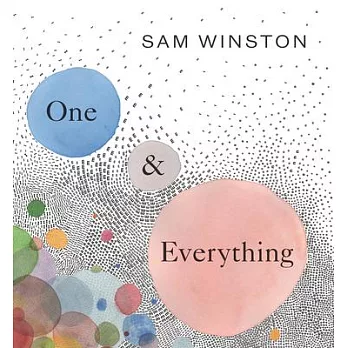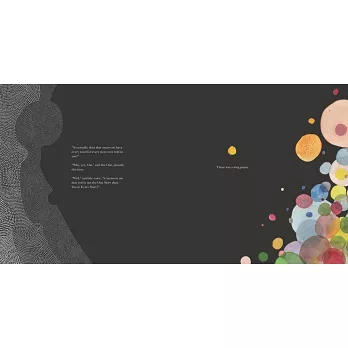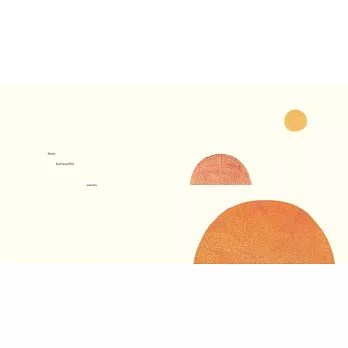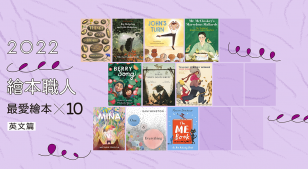世界上原本有許許多多不同的故事,但有一個故事(One),想要將自己變成最重要的那個,它用盡方法吃掉其他故事,只要一被它接近,就成為它的一部分。經過不斷的擴張與併吞,One的內部黑暗,根本無法分辨是否還有其他故事存在。悄悄的,在內部有些字母漸漸聚在一起發聲,拆穿這個故事,One其實這個也不懂、那個也不知道。證明這個自認無敵手的故事是所有其他故事的結合,並爆破這個One,成為眾多彩色的everyone。這些失傳的文字、語言,再度自由的散在世界各地。
這是一本以字母為圖像的創作,作者使用幾種目前已經失傳的字母系統,譬如馬爾地夫的塔安納文(Thaana scripts)、加拿大的原民音節圖形(Canadian Aboriginal Syllabics)。他表示,相較於「語言」存在的幾百萬年歷史,「文字書寫」的歷史只有幾千年,充其量只能說是一種新科技。人類語言的多樣與文化的豐富度息息相關,繪本家憂心的是,目前我們保留語言的效率遠遠不及它們消逝的速度。
—— Okapi「一起看圖文」:繪本家疫情下的創作,如何為人們帶來力量?:2022繪本職人最愛繪本╳10(英文篇),文/賴嘉綾
Fine artist Sam Winston, cocreator of the New York Times best-selling A Child of Books, celebrates the power of stories and written languages--and the imperative to preserve them.
Once there were many stories in the world. There were stories with sunsets and wonderful tales filled with fairies and dinosaurs. But one day, a story decided that it was the best, the most important story ever. It called itself the One and started to consume every other story it came across. The One ate stories made of seas and others full of dogs. Soon it seemed that the One was all there was . . . or was it? Inspired by the Endangered Alphabets project, aimed at preserving cultures by sharing their unique scripts, author-illustrator Sam Winston uses writing systems such as cuneiform and Tibetan, Egyptian hieroglyphs and ogham to illustrate this book in his signature typography-based style, using symbols and letters that have relayed the world’s stories over the centuries.



 天天爆殺
天天爆殺  今日66折
今日66折 




























 博客來
博客來 博客來
博客來 博客來
博客來 博客來
博客來 博客來
博客來